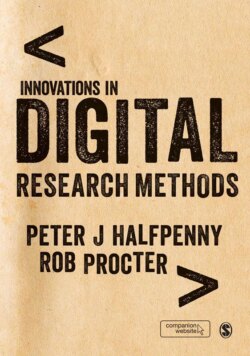Читать книгу Innovations in Digital Research Methods - Группа авторов - Страница 11
На сайте Литреса книга снята с продажи.
1.1.1 Digital Data
ОглавлениеAs everyone exposed to the Internet is aware, the amount of digital data available is expanding very rapidly, both through the digitization of past records and by the accretion of ‘born digital’ materials that are in machine-readable form from the outset. The digital universe – the data we create and copy annually – is estimated to be doubling in size every two years and projected to reach 44 trillion gigabytes by 2020 (where a trillion is a million million, or 1012) (IDC, 2014). For social scientists, the predictions that more data will be generated in the next five years than in the entire history of human endeavour is both an opportunity and a challenge.
Today, vast amounts of data are generated as people go about their daily activities, both data that is deliberately produced and that which is generated by embedded systems. For example, use of public services is captured in administrative records; in the private sector, patterns of consumption of goods and services are captured in credit and debit card records; patterns of personal communications are captured in telephone records; patterns of movement are logged by sensors, such as traffic cameras, satellites and mobile phones; the movement of goods is increasingly tracked by devices such as radio-frequency identification (RFID) tags; and the advent of the ‘Social Web’ has led to an explosion of citizen-generated content in blogs and on social networking sites.
Currently, these data sources are barely exploited for social research purposes. The potential benefits to researchers are enormous, offering opportunities to mount multidisciplinary investigations into major social and scientific issues on a hitherto unrealizable scale by marshalling artificially produced and naturally occurring ‘big data’ of multiple kinds from multiple sources. However, exploiting these digital data sources to their full research potential requires new mechanisms for ensuring secure and confidential access to sensitive data, and new analysis tools for mining, integrating, structuring and visualizing data from multiple sources.
